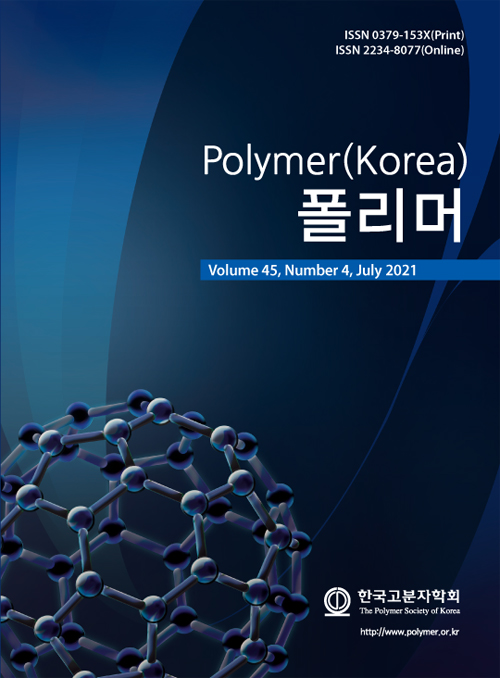- Improvement of Tensile Strength through Asymmetric Tool Path in Material Extrusion-Type 3D Printing
Department of Mechanical Design and Manufacturing Engineering, Graduate School of Seoul National University of Science and Technology, Seoul 01811, Korea
- 재료 압출 방식 3D 프린팅에서 비대칭 적층 경로의 적층을 통한 인장 강도 향상
서울과학기술대학교 기계디자인금형공학과
Reproduction, stored in a retrieval system, or transmitted in any form of any part of this publication is permitted only by written permission from the Polymer Society of Korea.
The deposition strength of material extrusion type 3D printed article is greatly influenced by the tool path. In this study, a 3D printed tensile specimen was fabricated with an asymmetric tool path and its tensile properties were analyzed. As a result of the experiment, specimen with asymmetric tool path based on 15° reference tool path showed higher tensile strength than that of the 0° reference tool path. In addition, specimen with asymmetric tool path based on 45° reference tool path showed the lowest tensile strength. After the tensile test, the fractured specimen was observed to determine the relationship between the tool path and tensile strength. In 3D printing, it was confirmed that higher tensile strength than the bulk tensile strength of the material can be obtained through the control of the asymmetric tool path.
재료 압출 방식 3D 프린팅의 적층 강도는 적층 경로에 따라 큰 영향을 받는다. 본 연구에서는 비대칭 적층 경로로 3D 프린팅 인장시편을 제작하여 인장특성을 분석하였다. 실험 결과 15°기준 비대칭 적층 경로 시편에서 0°기준 비대칭 적층 경로보다 높은 인장강도를 보였다. 또한 45°기준 비대칭 적층 경로 시편은 가장 낮은 인장강도를 보였다. 인장시험 후 파단된 시편을 관찰하여 적층 경로와 인장강도와의 관계를 분석하였다. 3D 프린팅에서 비대칭 적층 경로의 조절을 통해 원 소재의 벌크 인장강도보다 높은 인장강도를 얻을 수 있음을 확인하였다.
Keywords: 3D printing, material extrusion-type 3D printing, tool path, asymmetric tool path, tensile strength.
- Polymer(Korea) 폴리머
- Frequency : Bimonthly(odd)
ISSN 0379-153X(Print)
ISSN 2234-8077(Online)
Abbr. Polym. Korea - 2023 Impact Factor : 0.4
- Indexed in SCIE
 This Article
This Article
-
2021; 45(4): 649-653
Published online Jul 25, 2021
- 10.7317/pk.2021.45.4.649
- Received on Mar 13, 2021
- Revised on Apr 20, 2021
- Accepted on Apr 20, 2021
 Correspondence to
Correspondence to
- Min-Young Lyu
-
Department of Mechanical Design and Manufacturing Engineering, Graduate School of Seoul National University of Science and Technology, Seoul 01811, Korea
- E-mail: mylyu@seoultech.ac.kr










 Copyright(c) The Polymer Society of Korea. All right reserved.
Copyright(c) The Polymer Society of Korea. All right reserved.